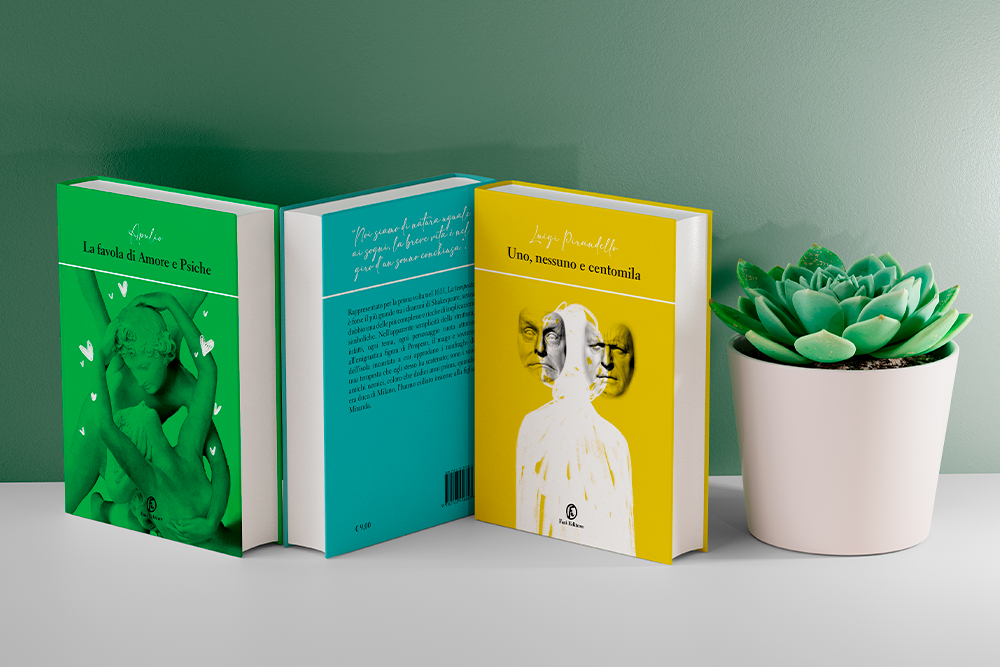
Project Overview:
This project involves the creation of three book covers for classic literary works. Each cover is designed to capture the essence of the story while appealing to a modern audience. The goal was to visually represent the themes, emotions, and narratives of these iconic texts in a way that is both engaging and true to the original works.
Book 1: La Favola di Amore e Psiche by Apuleius:
Concept and Inspiration:
La Favola di Amore e Psiche is a timeless tale of love, struggle, and transformation. The cover design draws inspiration from classical art and mythology, incorporating elements that symbolize love and the soul’s journey.

Design Elements:
- Color Palette: The color green symbolize jealousy and envy, which is a big part of the story apart of love.
- Imagery: It was used the image of Psyche Revived by Cupid’s Kiss (Amore e Psiche), a sculpture by Italian artist Antonio Canova, with drawing elements like small hearts around them.
Book 2: Uno, Nessuno e Centomila by Luigi Pirandello:
Concept and Inspiration:
Pirandello’s Uno, Nessuno e Centomila explores themes of identity, reality, and the multiplicity of the self. The cover design reflects these complex ideas. The overlapping and distortion of faces and shapes symbolize the protagonist’s crisis of identity and the fluid nature of self-perception.

Design Elements:
- Color Palette: The color yellow symbolize madness or mental instability in certain cultural and literary contexts.
- Imagery: Fragmented faces and abstract shapes to illustrate the multiplicity of identities.
Book 3: La Tempesta by William Shakespeare:
Concept and Inspiration:
La Tempesta is a story of magic, revenge, and reconciliation set on a mysterious island. The cover design aims to capture the dramatic and mystical atmosphere of the play. Dark, stormy colors and dynamic compositions are used to evoke the power and chaos of the tempest, while subtle magical elements hint at the supernatural forces at work.

Design Elements:
- Color Palette: Blue with flashes of whites representing the storm.
- Imagery: Waves, tempestuous skies, and ghostly boat.
Conclusion:
Each of these book covers was designed with careful consideration of the narrative and thematic content of the works. By blending modern design principles with elements inspired by the texts, the covers not only serve as an introduction to the stories but also as a visual interpretation of the literature itself.
